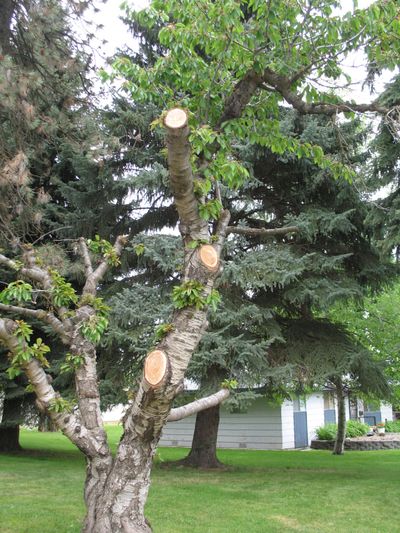Gardening: Have a plan before pruning trees; plants may not recover its shape from bad cuts

This is kind of a show-and-tell article.
A few weeks ago, I wrote about emergency pruning after our sloppy snowstorm. This week I am going to “tell” you some tips about doing the normal pruning we do this time of year.
To do the “show” part of this, I teamed up with arborist Tim Kohlhauff, who will be giving a Prune Like A Pro workshop for the Friends of Manito on Feb. 15 at the South Hill Library.
According to Kohlhauff, the difference between a professional job and an amateur attempt to prune is in the planning. Before a professional makes the first cut, they will identify the goal of pruning and how the tree should look to achieve that goal. The project then becomes a series of steps that need to be taken.
The first step is to identify what you want from your plant. Is it more fruit? Do you want more flower production? Does the plant have some health issues that pruning can help?
Whatever it is, you need to define it and then do some research on how to achieve it. Depending on the variety, fruit trees need to be pruned specific ways or you can lose all the fruit production. If a tree has health issues, what is causing them? A privacy screen means plants need to be pruned to maintain their bushiness, but how is that done?
Kohlhauff next recommends walking around the tree and looking at it from several dimensions. This helps identify which branches may need to come off to shape the tree toward your goals. Sometimes just a couple of cuts will get you where you want.
When it’s time to start your cuts, use only hand pruning saws, heavy pruning shears and hand pruners to do the work.
“Chain saws are for cutting down the tree,” Kohlhauff said. “If you need a chain saw, call a certified arborist who has the know-how, equipment and the insurance to do the job properly.”
Remove any dead or broken branches first, and then reassess how that changed the shape. Next, remove crossing or rubbing branches. The rubbing often leads to wounds that allow disease, insects and rot to invade the plant. Thin out dense patches of branches to let in more light into the interior of the tree.
Don’t top a tree to bring down its height. Instead remove a few tall branches back to another branch or to the trunk. When trees are topped, the leader can’t direct the tree’s growth. This results in wild growth at the ends of the branches that can’t easily be corrected.
When you cut a large branch leave a short stub near the trunk. Then cut the stub off just outside the branch collar on the trunk. This will reduce bark tearing. Never use tree paint or sealer on the cuts. The tree will heal itself over time, especially if you made good cuts.